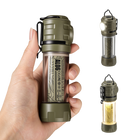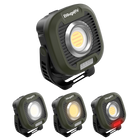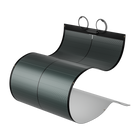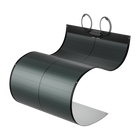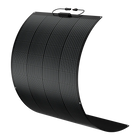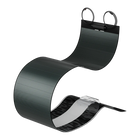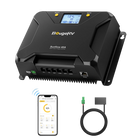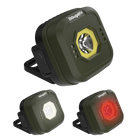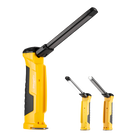What is MPPT Solar Charge Controller?


The energy transformation of industry is underway. Ecological awareness is spreading. Do you want to know more about the means of autonomous energy production? Be aware that they are getting easier and easier to install. Solar panels, battery, MPPT solar charge controller, don't be afraid of using them!
These are the elements of an installation that give you real energy freedom. They are also major marketing arguments for a business today. The MPPT solar charge controller optimizes the operation of an autonomous electrical system. This is a way to increase energy savings.
What are the advantages of an MPPT charge controller?
Thinking of equipping your building with autonomous lighting? Your parking entrance from a control terminal? Your delivery dock for an automatic headlight? Do you want to use a solar kit to reduce installation costs? The solar charge controller will be part of the installed kit. This material is often in the form of a small box. It makes an autonomous electrical system more efficient. It sits at the interconnection between solar panels, batteries, and the consuming application.
Here is a list of the advantages of the MPPT solar charge controller:
- Protection of batteries against overcharging and deep discharge.
- Tackles oversizing of wiring between panel and equipment. It lowers costs.
- Increase in the production of energy supplied by the system (20 to 30%).
- Extended battery life.
How does the MPPT solar charge controller work?
MPPT stands for Maximum Power Point Tracking. The MPPT regulator scans the electrical voltage produced by the photovoltaic panel several times a day.
Its purpose is to find the maximum output point of the current supplied by the panel. Then make sure to always use this full power. In short, the MPPT charge controller draws maximum power from the panel. It makes an installation intelligent.
At this stage, one thing must be clarified. The panel usually obeys the load voltage to which it is connected. If the voltage of the application (battery, screen) is 12 volts, what happens? The panel will generate a little more than 12 volts, but not much more.
Take the example of a panel that is part of our references. Its characteristics are: 18 volts, intensity 7.54 A, power 140 watts. It delivers its maximum power at 18 volts (denoted vpm). The 6 volts gap if connected to a 12 volts battery simply will not be produced. The power loss is 6 x 7.54 = 45 watts.
In addition, the power produced by the panel varies with temperatures. It drops when the temperature rises. Its productivity is better when the temperatures are cold. For example, a 120 watts type panel can produce 130 watts in cold weather. It also produces more when the brightness is at maximum. Your solar panel therefore never works in optimal condition.
What to remember about the MPPT charge regulator?
The MPPT charge controller makes it possible to bypass all the technical and climatic limits that we have mentioned. The energy gain obtained with the MPPT regulator is greater in winter, when it is cold. In addition, with weakly charged batteries, it provides more electric current. You can always invest in cheaper installations, equipped with conventional PWM charge controllers. But they will never be at their maximum potential.
BougeRV offers you products adapted to your needs. The solar panels, MPPT solar charge controller, and the solar connectors that we offer will be your best choice to your solar system.









